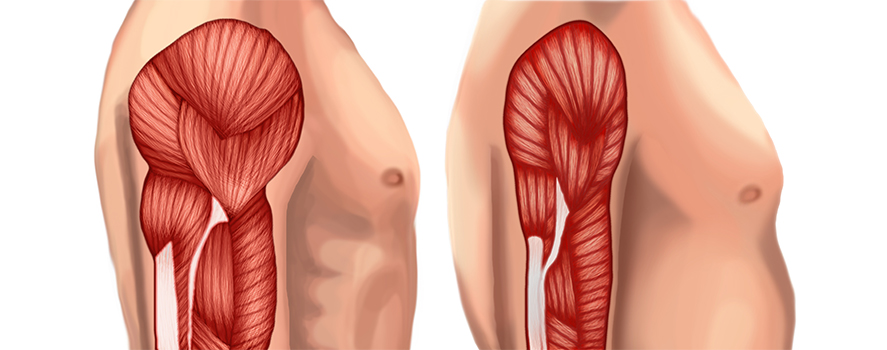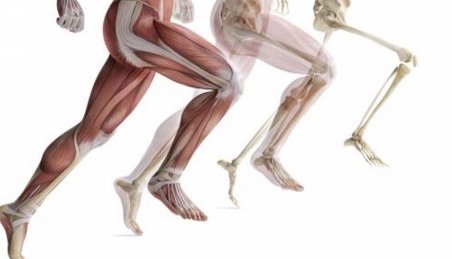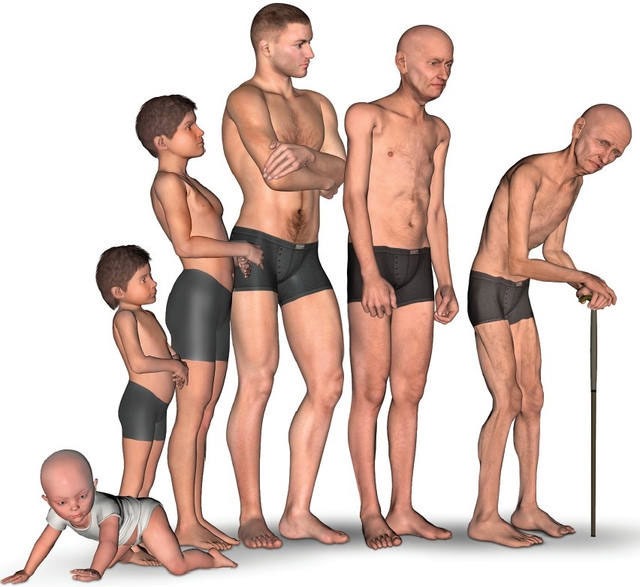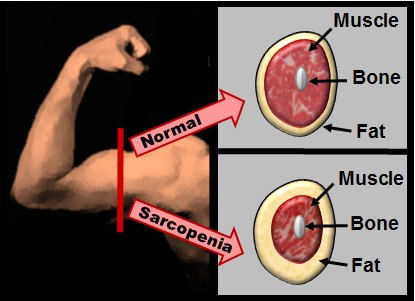How To Prevent And Treat Sarcopenia
Introduction
“Sarcopenia” -is a Greek work that means “Poverty of the flesh”. It is simply called “muscle wasting”. Sarcopenia is the loss of functionality, strength and lean muscle mass that is often connected with age. It is capable of preventing elderly people from doing their normal and most fundamental task of everyday. It also makes them vulnerable to suffering falls and other accidents. A recent study, in community where older people with average age of 65 lives, the prevalence of sarcopenia was discovered to be 4.6% in men and 7.9% in women with the use of the EWGSOP approach.
-is a Greek work that means “Poverty of the flesh”. It is simply called “muscle wasting”. Sarcopenia is the loss of functionality, strength and lean muscle mass that is often connected with age. It is capable of preventing elderly people from doing their normal and most fundamental task of everyday. It also makes them vulnerable to suffering falls and other accidents. A recent study, in community where older people with average age of 65 lives, the prevalence of sarcopenia was discovered to be 4.6% in men and 7.9% in women with the use of the EWGSOP approach.
Check Out Over Over 50 Fit Training Guide To reverse Muscle Loss
Sarcopenia is a complex process that is brought about by a combination of factors which includes the adoption of a sedentary lifestyle and a poor diet. With the onset of aging, the muscle tissue is gradually lost and this results in the reduction of mass and strength. This is a condition that is referred to as sarcopenia. The sequela of sarcopenia often causes weakness, infirmity, increase in the cost of health care and decreased independence, and subsequently increased health care costs. No particular mechanism has defines the process of sarcopenia yet and the only solution for it is stressing weight-training and regular physical exercise, for elderly women and men. But still, people that have been known to maintain regular physical exercises are not completely immune to this condition.
When someone goes into the muscle wasting condition, it is dangerous because as the person loses muscle, he will start to lose strength as well. This also affect their metabolism and when this happens, the health of their cells is affected as well as well as the amount of calories they burn and their appetite for healthy food. According to research, the average America loses ½ pounds of tissue each year after the age of 30. Another research also shows that an average America loses 15 pounds of muscle between the ages of 30-60. The stress hormones break down the bone and muscle tissue. As it is generally believed that this condition affects aging people, Fred Schafer, a well known Nutritionist and sport man, strongly believes that it has nothing to do with age and that this believes is simply a myth and an excuse used by many people not to reach their potential best. He argues that Sarcopenia and muscle leaking are almost lifestyle related since poor nutrition, inconsistent physical activities and too much ongoing negative stress are the primary cause of this condition which he proved in his guide-Over 50 Fit.
 Sarcopenia is a progressive process that gradually causes damage and it is characterized by 3–8% reduction in lean muscle mass in every ten years starting right after the age of 30 years. This condition is said to affect 30 % of people that are over 50 years and 50% of adults that are over 80 years. Research has focused and is still focusing on the mechanisms that are contributing to sarcopenia, which included studies that are focusing on cell signalling and protein metabolism. The purpose of this article is to highlight recent research examining the role of protein, diet and exercises in the management or prevention of in the prevention of sarcopenia and provide recommendations on the kings of exercise and amount of protein for the body so as to preserve the muscle mass while aging.
Sarcopenia is a progressive process that gradually causes damage and it is characterized by 3–8% reduction in lean muscle mass in every ten years starting right after the age of 30 years. This condition is said to affect 30 % of people that are over 50 years and 50% of adults that are over 80 years. Research has focused and is still focusing on the mechanisms that are contributing to sarcopenia, which included studies that are focusing on cell signalling and protein metabolism. The purpose of this article is to highlight recent research examining the role of protein, diet and exercises in the management or prevention of in the prevention of sarcopenia and provide recommendations on the kings of exercise and amount of protein for the body so as to preserve the muscle mass while aging.
 Classification
Classification
Sarcopenia is neither a disease nor a syndrome, and it is has not been concluded yet to be a medical sign, because the degree to which it is normal (physiologic) to abnormal (pathologic) is yet to be determined. Therefore, the psychological and physiological factors that contribute to the process of sarcopenia are multifactorial and they also occurr over a prolonged time period. No single cause or mechanism has been identified in order to explain this loss of strength and mass that is age-related. As of 2009, there is no generally accepted definition of sarcopenia in the medical literature.
Check out Proven Lifestyle Tips That reverse aging here
Signs and Symptoms
The following are the signs and symptoms of sarcopenia.
- Sarcopenia is characterized first by a decrease in the size of the muscle)
- There is also a reduction in the quality of muscle tissue
- Muscle fibres are also replaced with fat.
- Changes in muscle metabolism
- Sarcopenia comes with an increase in fibrosis
- Oxidative stress
- Degeneration of the neuromuscular junction
- Progressive loss of muscle function
Causes Of Sarcopenia
Sarcopenia is determined by two factors: initial amount of muscle mass and rate at which aging decreases muscle mass. The theory that stated the cause of sarcopenia is that the condition is happens when there is a failure in the activation of the satellite cells. Satellite cells are small mononuclear cells that touch the muscle fiber. Satellite cells are normally activated when there is an injury or exercise. After which these cells differentiate and fuse into the muscle fiber and help in maintaining its function. Too much muscle loss is often a result of both the decrease in anabolic signals, which includes testosterone and growth hormone, and the development of catabolic signals, which include pro-inflammatory cytokines.
As an individual grows, so also are the oxidized proteins increasing in his skeletal muscle and this leads to a gradual development of lipofuscin and proteins that are cross-linked proteins, which are normally removed through the system of proteolysis. Although, these proteins assemble in the skeletal muscle tissue, they do not function correctly. This results to a build up of materials that are non-contractile in the skeletal muscle. This helps to provide detailed report on extreme loss of muscle strength and so also muscle mass, in sarcopenia.
One group has recommended that the evolutionary basis that is responsible for the failure of the body in maintaining function and muscle mass as it ages, is that the genes that are collating these traits were selected in the Late Paleolithic environment. This is the period when there was a really high level of obligation in the use of muscular effort, and so these genetic parameters are matched wrongly to a modern lifestyle where there high levels of sedentary behaviour that is lifelong.
A research into the developmental history of disease and health has revealed that the early influence of the environment on development and growth of human is capable of having long term positive or negative effect on the health of human. Example of these includes low birth weight and an impoverished early environment, is connected with decrease in strength and muscle mass in the life of an adult. There was a particular study that revealed the fact that lower birth weight is connected with the decrease in muscle fibre score. The study also recommended that the influences of the environment muscle morphology may help to give a sufficiently detailed report on the connection between sarcopenia and lower birth weight that has been widely reported.
Check Out Omega Body Blueprint System…
Preventing Sarcopenia
Nutritional Strategies for Optimizing Muscle Mass
Many nutrients have been known to show great promise in fighting against sarcopenia. These include Vitamin D. Creatine and whey protein.
 Creatine: The muscle atrophy that is rampant in the elderly ones is known to have come mainly from the decrease or loss in fast-twitch (Type II) muscle fibers that are usually activated while doing high-intensity movements which includes sprinting and weight lifting. These are the type of fibres are seriously affected by creatine which is a dietary supplement. With several studies, it has been proved that when creatine is given to the elderly that are taking part in resistance exercise training, it assist them in increasing their lean body mass and strength as well. According to another research group, the intake of creatine supplement by the elderly has the ability to help reduce age-related loss of muscle mass and strength and also improve their ability to perform their normal everyday activities.
Creatine: The muscle atrophy that is rampant in the elderly ones is known to have come mainly from the decrease or loss in fast-twitch (Type II) muscle fibers that are usually activated while doing high-intensity movements which includes sprinting and weight lifting. These are the type of fibres are seriously affected by creatine which is a dietary supplement. With several studies, it has been proved that when creatine is given to the elderly that are taking part in resistance exercise training, it assist them in increasing their lean body mass and strength as well. According to another research group, the intake of creatine supplement by the elderly has the ability to help reduce age-related loss of muscle mass and strength and also improve their ability to perform their normal everyday activities.
Vitamin D: Although it has been known by scientists for a long time now, that vitamin D plays an important role in bone health. According to recent studies’ suggestions, it is also very necessary for maintaining muscle mass in people that are aging. Not only that, Vitamin D is effectively helpful in preserving the Type II muscle fibers that are prone to atrophy in the elderly. Recently, Scientists got to discover that vitamin D helps in supporting both that muscle and bone tissue, and that the fact that the low levels of vitamin D that are seen in aging people may be connected to muscle formation and the formation of poor bones. For this reason, the adequate intake of vitamin D will definitely help to reduce the occurrence of osteoporosis and sarcopenia in aging people.
Read 18 best ways to get rid of sugar addiction
Whey Protein: Many of the elderly people find it hard to get protein that is high in protein and enough for them from their dietary sources. Whey protein is a type of protein that is gotten from dairy products. It may help aging adults to properly make use of their protein intake and in doing so be protected against loss of muscle mass. The biological value in whey is exceptionally high. It contains amino acids in the right proportions and they are similar to the ones that are required by humans. Proteins that have higher value biologically are superior to proteins that are lower in quality especially when it comes to maintaining and taking proper care of the muscle mass. According to one study, it was found out that protein is especially effective in the preservation of lean body mass in the elderly.
When it comes to developing a number of supplement regimens for the prevention or treatment of sarcopenia, there are other different nutrients that deserve to be considered as well. These include amino acid glutamine, carnitine compounds and omega-3 fatty acids. Even though it is yet unknown to scientist what kind of connection exactly that these nutrients have with sarcopenia, the nutrients are well known to have biological activities that recommend them to have a beneficial role in maintaining a healthy muscle.
Under many physiological situations, the omega-3 fatty acid EPA (eicosapentaenoic acid) is known to preserve and maintain muscle mass. According to scientist, nutrients that have anti-inflammatory effects are valuable when it comes to the preservation of muscle mass. These nutrients include the omega-3 fatty acid DHA and EPA. Carnitine formulations are also effective at enhancing athletic performances and also have the ability to promote healthy muscle mass in aging people that are vulnerable to developing sarcopenia. The combination of glutamine with resistance training has been known to help in increasing muscle mass in older adults.
Critical Importance of Exercise
Lack of exercise is known to be one of the risk factors for sarcopenia. Even those that are highly trained also experience muscle loss. Master trainers that have done several training all through their lives and are still doing it also experience progressive loss of strength and muscle after the age of 30 years. They also experience significant decline in the records of their strength and speed.
 As we all know, Master-class athletes usually follow and maintain a high level of fitness al through their lives, but the fact is that even among these master athletes, the performances of those of them that engage in weight-lifting and marathon race usually goes down whenever they reach the age of 40. However, the process of losing muscle gradually often starts at the average age of 50 years. See OVER 50 FIT Guide for more.
As we all know, Master-class athletes usually follow and maintain a high level of fitness al through their lives, but the fact is that even among these master athletes, the performances of those of them that engage in weight-lifting and marathon race usually goes down whenever they reach the age of 40. However, the process of losing muscle gradually often starts at the average age of 50 years. See OVER 50 FIT Guide for more.
In the treatment and management of sarcopenia, exercise is of interest. It has been proven that there is increased capacity and ability of skeletal muscle to synthesize proteins whenever exercise that is short-term takes place.
 Exercise has lots of benefits and it also has its own way of getting rid of excess fat from your body. It also improves the capacity that is reserved and muscle strength as well. The question now is, why is it that exercise compliance is low in older adults? Or maybe there are factors that are hindering the elderly from deriving benefits from exercise. There is possibility that sarcopenia has both physiologic factors, which had been discussed earlier, that are combined with issues relating to social life. These could result in the elderly not taking part in exercises and this could have contributed to their frailty. If one avoids exercises, then in the future, it will be hard to exercise.
Exercise has lots of benefits and it also has its own way of getting rid of excess fat from your body. It also improves the capacity that is reserved and muscle strength as well. The question now is, why is it that exercise compliance is low in older adults? Or maybe there are factors that are hindering the elderly from deriving benefits from exercise. There is possibility that sarcopenia has both physiologic factors, which had been discussed earlier, that are combined with issues relating to social life. These could result in the elderly not taking part in exercises and this could have contributed to their frailty. If one avoids exercises, then in the future, it will be hard to exercise.
Exercise is very vital in managing and preventing sarcopenia. With regular exercise, the hormones that elevate healthy muscle mass are stimulated. Examples of these hormones include growth hormone. This hormones act all through the body. Another of the hormone that promotes healthy muscle strength is the local growth factors, which includes mechano growth factor. Exercise helps to fight against the loss of important bone and muscle that are associated with aging. Exercise also helps to boost the results of other interventions like hormone replacement therapy.
 Obviously it is better to exercise than not taking part in any exercises at all, but the fact there is that all forms of exercises are not equal. Aerobic exercise is excellent when it comes to the cardiovascular system and for maintaining the body weight in the aspect of keeping the levels of the fats low, but it is not that effective in the preservation of the lean muscle that someone already has. Whenever the athletes want to increase lean mass, they make use of resistance training because that is what they usually prefer. Therefore, participating in some kings of exercises such as machines, making use of weights, bands or other devices is necessary and essential for those people that wants increase or preserve their muscle mass. That should be why the Federal Centres for Disease Control and Prevention has given of some guidelines to be followed when it comes to resistance exercises for the elderly ones. This is because it has been noted that not only can strength training contribute to muscle building but it can as well improve bone health, promote mobility and improve overall health and total well being.
Obviously it is better to exercise than not taking part in any exercises at all, but the fact there is that all forms of exercises are not equal. Aerobic exercise is excellent when it comes to the cardiovascular system and for maintaining the body weight in the aspect of keeping the levels of the fats low, but it is not that effective in the preservation of the lean muscle that someone already has. Whenever the athletes want to increase lean mass, they make use of resistance training because that is what they usually prefer. Therefore, participating in some kings of exercises such as machines, making use of weights, bands or other devices is necessary and essential for those people that wants increase or preserve their muscle mass. That should be why the Federal Centres for Disease Control and Prevention has given of some guidelines to be followed when it comes to resistance exercises for the elderly ones. This is because it has been noted that not only can strength training contribute to muscle building but it can as well improve bone health, promote mobility and improve overall health and total well being.
Reverse Aging with The Slimming Protocol System
Protein in The Treatment of Sarcopenia
For now, there is no general agreement on whether or not dietary protein needs to be changes as someone advances in age. The protein intake that is currently recommended for everybody from the age of 19 years and older is 0.8 g·kg−1·d−1. The Institute of Medicine established this, and it is primarily based on data that comes from short-term nitrogen balance studies in the younger adults.
 A problem concerning the wide range of this suggestion is that the initial data collection utilized for the estimate was stemmed from nitrogen balance researches carried out on boys. Although numerous studies assist the 0.8 g – kg − 1 – d − 1 recommendation (59-61), others have suggested that a reasonably higher healthy protein intake of 1.0-1.3 g – kg − 1 – d − 1 may be called for to preserve nitrogen b
A problem concerning the wide range of this suggestion is that the initial data collection utilized for the estimate was stemmed from nitrogen balance researches carried out on boys. Although numerous studies assist the 0.8 g – kg − 1 – d − 1 recommendation (59-61), others have suggested that a reasonably higher healthy protein intake of 1.0-1.3 g – kg − 1 – d − 1 may be called for to preserve nitrogen b
alance as well as balance out a possibly reduced power intake, decreased protein artificial efficiency, and damaged insulin action in senior individuals.
Such referrals must be weighed versus any type of potential rise in the threat of toxicity or impaired kidney feature. Very-high-protein meal plans (> 45 % energy) have been connected with a host of negative occasions, diarrhea, including nausea, increased calcium discharging from diets high in sulfur-containing amino acids, and boosted morbidity.
Nonetheless, diet plans consisting of a relatively normal amount of protein (20– 35 % energy) do not seem connected with unfavourable health and wellness results. Furthermore, in human scientific tests, in addition to separated instances of intolerance or irritation, there have actually been no reports of toxics related to the administration of amino acid.
Notwithstanding the fundamental difficulties in the assessment of nitrogen balance, there are a variety of usual arguments supplied to assist or shoot down the validity of the present Recommended Dietary Allowance for protein. Many contend that nitrogen balance research studies may not be the optimal indication of the requirement for protein requirements. They could also not be the ideal technique for establishing recommendations for optimum healthy protein intake and health and wellness.
Nonetheless, with ideal experimental control, the strategy could generate trustworthy as well as consistent information and also has several practical benefits over choices such as steady isotope approach. Nevertheless, although nitrogen equilibrium researches may be proper for setting up the requirement for amino acid or nitrogen to stop shortage, the concern of whether they are appropriate methods of developing optimum consumptions for upkeep of strength muscular tissue mass, strength, as well as metabolic function continues to be.
In addition to the amount of protein consumed, there appears to be refined intrinsic distinctions in the capability of various protein sources to elevate muscle protein synthesis. In the context of a normal meal, which consists of a range of macronutrients and proteins, refined intrinsic distinctions in the capability of specific protein sources to promote muscle protein anabolism are most likely to be lessened.
There have actually been multitudes of evidence of principle research studies showing that free-form vital amino acids and whey protein supplements elevates the synthesis of muscle protein synthesis in healthy more younger and older individuals. Of higher useful value, nevertheless, is identifying whether typical protein-rich foods can promote muscle protein anabolism in older individuals. Current information recommend that a moderate 113 g (4 oz) serving of an undamaged protein (ie, lean beef) includes enough amino acids (30 g overall; 10 g vital amino acids) to enhance combined muscle protein synthesis by ≈ 50 % in both older and young females and males.
The mix of quick (whey) and sluggish (casein) proteins discovered in milk might supply a higher boost in muscle protein synthesis than nitrogenous soy drink after resistance workout in young people. In the context of a normal meal, which includes a range of macronutrients and proteins, refined fundamental distinctions in the capability of specific protein sources to promote muscle protein anabolism are most likely to be reduced.
In addition, whereas some types of supplements have actually been revealed to acutely promote net protein synthesis in both young and senior people, their usage does not deal with the basic requirement to analyze dietary interventions that might be executed in a practical context. Targeted amino acid supplements might certainly be helpful in cases including sped up protein catabolism (eg, advanced cachexia, sarcopenia, and injury), for the bulk of older grownups the most useful methods of enhancing skeletal muscle protein anabolism is to consist of a normal serving of protein that is of high biological value all through each of the meals.
Presently, no representatives are authorized for treatment of sarcopenia. It has been revealed that Human growth hormone and DHEA have little to no effect in this aspect as well. Growth hormonal agent enhances muscle protein synthesis and enhances muscle mass, however does not lead to gains in stamina and function in a lot of researches. This, and the comparable absence of effectiveness of its effector insulin-like development aspect 1 (IGF-1), might be due to regional resistance to IGF-1 in aging muscle, resulting from swelling and other age modifications.
Testosterone or other anabolic steroids have actually likewise been examined for treatment of sarcopenia, and appear to have some favourable results on muscle stamina and mass, however trigger numerous side impacts and raise issues of prostate cancer in males and virilization in females. Furthermore, current researches recommend testosterone treatments might cause negative cardiovascular occasions. Other authorized medications under examination as possible treatments for sarcopenia consist of eicosapentaenoic acid, vitamin D, ghrelin and angiotensin transforming enzyme inhibitors.
New treatments in scientific advancement consist of myostatin and the careful androgen receptor modulators (SARMs). Nonsteriodal SARMs are of certain interest, provided they show substantial selectivity in between the anabolic results of testosterone on muscle, however with little to no proof of androgenic results (such as the stimulation of prostate in males).
MT-102, the first-in-class anabolic catabolic changing representative (ACTA), has actually just recently been checked in a Phase-II scientific research for dealing with cachexia in late-stage cancer clients. The research study information reveal substantial boosts in body weight in clients treated with 10 mg of MT-102 two times daily over the research duration of 16 weeks compared with
 Substantial decline in body weight in clients getting placebo treatment. In preclinical designs, MT-102 has actually likewise revealed advantages in reversing sarcopenia in senior animals. Future medical research studies will examine sarcopenia as possible 2nd sign for MT-102.
Substantial decline in body weight in clients getting placebo treatment. In preclinical designs, MT-102 has actually likewise revealed advantages in reversing sarcopenia in senior animals. Future medical research studies will examine sarcopenia as possible 2nd sign for MT-102.
Novartis suggests using a brand-new particle BYM338 Bimagrumab for treatment of sarcopenia and prepares making a FDA submisson in 2019.
Sarcopenia is significantly being identified in scientific practice. Hand grip stamina alone has actually likewise been promoted as a scientific marker of sarcopenia that is basic and expense reliable and has thorough predictive power, although it does not offer thorough info.
By adopting a regimen that includes dietary modifications, hormone replacement therapy as indicated, nutritional supplements, and exercise, it is possible to dramatically improve lean muscle mass at virtually any age(check out the SLIMMING PROTOCOL GUIDE). Optimizing muscle mass helps improve strength, functionality, and overall health and well-being, even into advanced age. Since it is far easier to prevent or slow the progression of muscle loss than it is to treat it later in life, it makes sense to begin your sarcopenia-prevention program today.
There are engaging information to support the capability of dietary protein to acutely promote muscle protein synthesis in aging people. There is basic arrangement that reasonably enhancing day-to-day protein consumption beyond 0.8 g – kg − 1 – d − 1 might improve muscle protein anabolism and offer a way of lowering the progressive loss of muscle mass with age. Existing research study has actually not determined an additive or synergistic result resistance workout and protein supplements on muscle protein anabolism in aging populations.
By embracing a program that consists of dietary adjustments, hormonal agent replacement treatment as shown, dietary supplements, and workout, it is possible to drastically enhance lean muscle mass at practically any age. Enhancing muscle mass assists enhance stamina, performance, and general health and wellness, even into sophisticated age. Because it is far much easier to slow the development or avoid of muscle loss than it is to treat it later on in life, it makes good sense to start your sarcopenia-prevention program today.
Download Over 50 Fit Training Guide with bonuses
Ageing is associated with a decreased capability to promote skeletal muscle protein synthesis in reaction to insulin, feeding, and resistance workout. To take full advantage of muscle protein synthesis whereas being cognizant of overall energy consumption, we recommend a dietary strategy that consists of 25– 30 g of high quality protein per meal. Making some lifestyle changes can really go a long way to help you reverse aging and live longer.

0 Responses